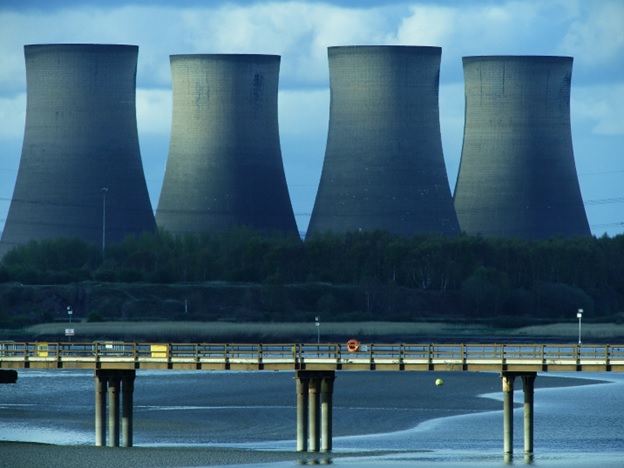- Home |
- Textile Industry
Textile Industry
Application
Download


Ozone in Textile Industry
Wet processing of textile materials consumes a large amount of electricity, fuel, and water. The aim of wet processes is to improve the appearance, texture, or performance of a textile material. Wet processes consist of pretreatment, dyeing, printing, and finishing processes. Wet processes compose of application of chemicals, fixation, washing, and drying stages generally.
The textile dyeing and finishing industry is one of the largest water users. It uses huge amount of water throughout all processing operations. A lot of dyestuffs, chemicals, auxiliaries, etc. are applied to textile materials in water baths. Ecological problems are commonly related with water contamination in the textile dyeing and finishing industry. Wastewater of the textile industry is hot, has strong odor, and colored by dyestuffs, which are used as a part of dyeing and/or printing process.
Ozone can effectively address the effects of pollution problem in wet processing of textiles and will save water and/or energy. Ozone has wide application in textile industry. Recently, scientific studies about the use of ozone in textile manufacturing are very popular. It is majorly commercially common in denim and garment washing.
The use of ozone in denim washing
The denim garments are very popular, and they are preferred by people of all ages, classes, and genders. Depending on the desired effect, denim garments are treated with different substances. Wet processes in denim washing are not environment friendly. High water and energy consumption, large amount of wastewater, and solid waste like pumice stones are generally environmental problem in denim washing. Sodium hypochlorite is a very common bleaching agent in denim washing. Especially AOXs (adsorbable halogenated organic compounds) are the most important environmental problem. Therefore, chlorine-free bleaching technologies are a good solution for AOX. Ozonation is an alternative bleaching method. Ozonation is a simple and “green” process because it does not require steam and water. Therefore, it greatly reduces process time, water, chemical and energy consumption, and amount of wastewater.
Ozone decomposes indigo and other dyes because of high oxidation potential. In addition to denim washing, it is generally applicable to treatment of other textiles like T-shirts, shirts, chinos, and casual wear. In ozonation, the ozone generated in the equipment can commercially provide bleaching effect. And ozone is generally applied to whole of the garment in this ozonation machine.
Ozonation of cellulosic fibers
The new advanced processes contain ozonation, ultrasound, and ultraviolet. In this study, cotton fabrics are bleached by combining ozone with ultrasound and ultraviolet. Advanced processes can be used in pretreatment of cotton fabrics. After ultrasonic treatment followed by ozonation, whiteness and hydrophilicity of the fabric are sufficient for dyeing. It is difficult to remove optical brightener efficiently from the fabric when any problem is seen on the fabric due to high stability of optical brightener. Hazardous chemicals are generally used to remove it. Therefore, ozonation process has ecological advantage. Increasing ozonation time increases the efficiency.
A lot of researcher’s study on ozonation of cellulosic fibers, especially cotton fabric bleaching. Cotton fabric containing 60% water at pH 7 can be bleached in a short time with ozonation treatment. Room temperature is the optimum for ozonation. After ozonation in a short time, the whiteness of the fabric is acceptable for dyeing and DP losses are not so important. Bleaching effect of ozonation is successful because of high oxidation potential of ozone.
Ozonation of protein fibers
To obtain shrink-resisted wool garments and fabric, a continuous or batch treater where wool fabric and garments hung in cabin containing ozone. Asa result circulation of the vapor around the garments and fabric is inevitable for rapid reaction. Fabric construction is very important for desired degree of shrink resistance. Ozone-steam process is a solution to the felting problem of wool.
Advantages of use of ozone in the textile industry
Wet processing of textile materials consumes large amounts of electricity, fuel, and water. Therefore, contaminated effluent is environmental problem. Ozone treatment proposed a solution to environmental pollution from textile wet processes. Use of ozone in the textile industry has advantages.
- lower water and chemical consumption and time loss of ozonation process than conventional wet processes,
- No need to store chemicals compared to the other conventional methods,
- no dangerous waste because of decomposition of ozone into oxygen,
- no halogenated organic compounds (AOX) in wastewater,
- different pattern and fading effects soon in denim washing,
- improving dyeability of fibers,
- more ecological antifelting treatment than conventional methods,
- higher whiteness than conventional bleaching processes, and
- treatment of hygienic nondurable products like sheets, gauze bandage, tissues, bib, hydrophilic cotton, etc., due to disinfectant property of ozone.

 Our Brochures
Our Brochures